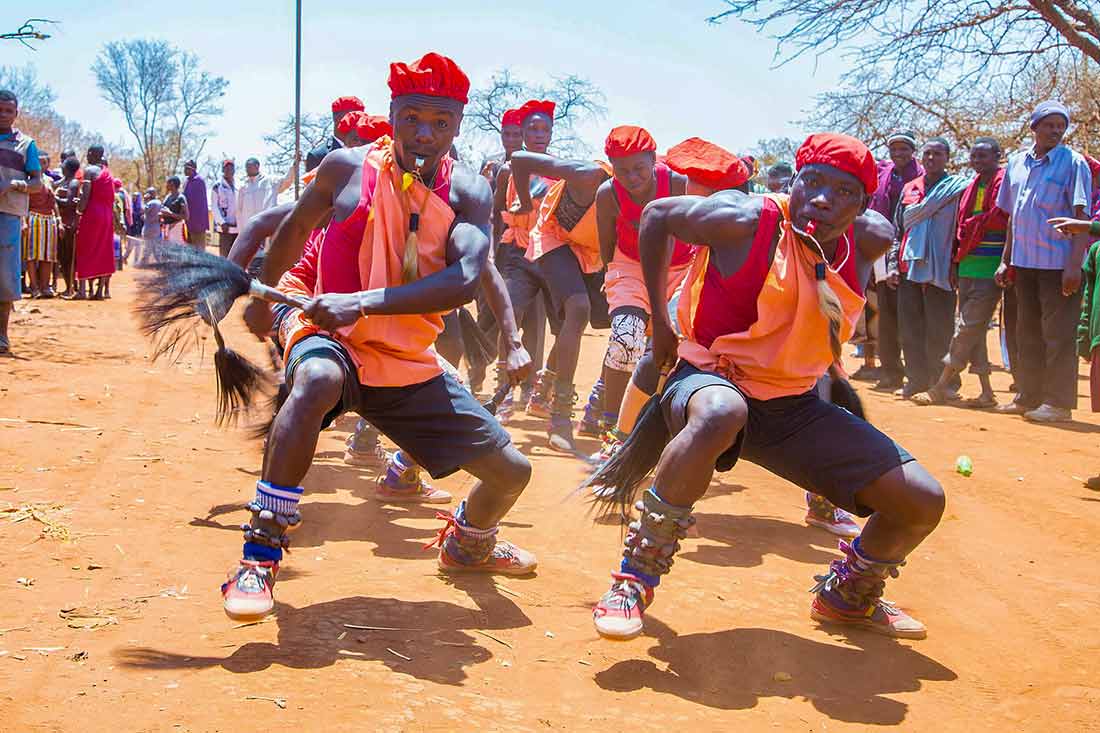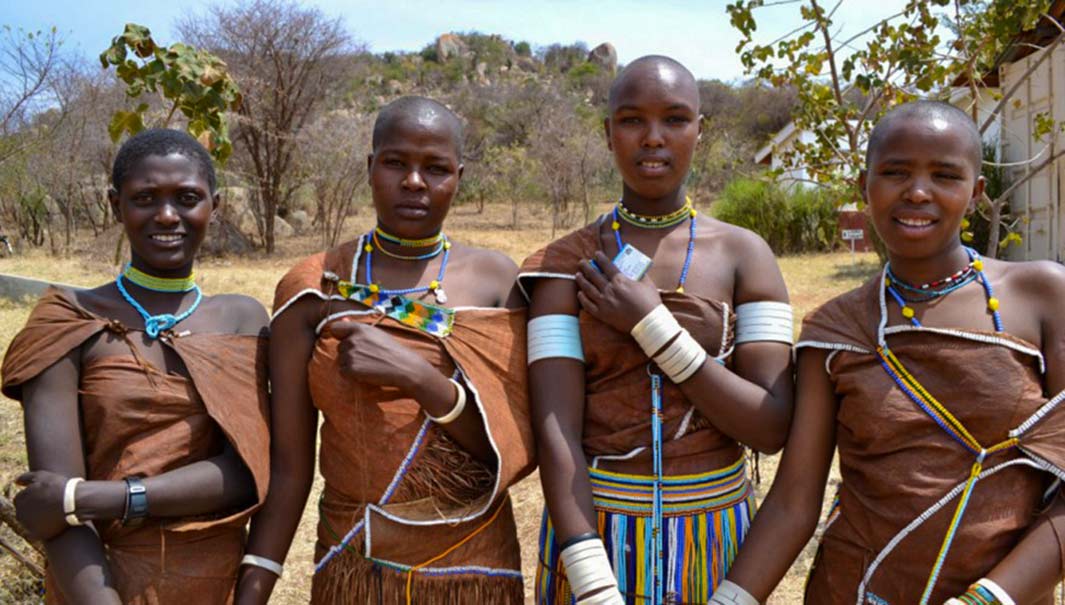Some say a journey to Tanzania is like going back to the beginning of man. There are more than 120 different tribes in Tanzania. Nowhere else in Africa can you find this level of tribal diversity.

One of the founding directives, when the United Republic of Tanzania became independent, was that no ethnic group should dominate. This was actually not that difficult to achieve since none of the tribes made up more than 10% of the country’s overall population. Despite the many languages, the Tanzanian government has adopted Swahili as the official language of Tanzania.
With such a diversity of people contained within the boundaries of Tanzania, having Swahili as a national language has given the country a strong sense of national identity.
Furthermore, Tanzania is the only African nation whose tribes represent all four of the continent’s major ethnolinguistic groups—Bantu, Cushitic, Nilotic, and Khoisan.
What does this mean? Continue reading to find out more.
Bantu
The Bantu languages are a large family of languages spoken by the Bantu peoples in the southern half of Africa. They form the largest branch of the Southern Bantoid languages. The total number of Bantu languages ranges in the hundreds, depending on the definition of “language” versus “dialect”, and is estimated at between 440 and 680 distinct languages. The total number of Bantu speakers is in the hundreds of millions, estimated at around 350 million in the mid-2010s (roughly 30% of the total population of Africa or roughly 5% of the world population).
The Bantu language with the largest total number of speakers is Swahili. Of note, In Tanzania, all primary schools teach Swahili. However, English is the teaching language in secondary school.
Cushitic
40 languages make up the Cushitic language. it is spoken throughout Ethiopia, Eritrea, Djibouti, Somalia, and northwestern Kenya. In Tanzania, the South Cushitic language is spoken mainly in the central part of the country.
Nilotic
The word Nilotic comes from the Nile River or the Nile region of Africa. The Nilotic peoples originally migrated from the Gezira area in Sudan. Today, the Nilotic language speakers live in parts of the Democratic Republic of the Congo, Ethiopia, Kenya, Sudan, South Sudan, Tanzania, and Uganda.
Khoisan
The Khoisan language is a unique language spoken mainly in Southern Africa. There are also two outlying languages found in eastern Africa. The term is a compound word from the Nama dialect of the Khoisan language The words are khoekhoe which means ‘person’ and saan which means ‘bush dweller’.
Their most distinctive linguistic characteristic is the extensive use of click sounds. It is a feature that has spread through many Bantu languages.
Top Five Tribes
Now that you have a better understanding of the languages, let’s talk about how that relates to the people of Tanzania. As previously mentioned, there are more than 120 tribes in Tanzania. Learning about all the tribes would take too long, a lifetime, probably, so let’s narrow it down to the top five. Below are the five most important and influential tribes you should know about. These are the ones that you’ll most likely interact with during your Tanzanian travels.
- Sukuma
- Chagga
- Maasai
- The Hadza or Hadzabe
- Iraqw
Sukuma

Let’s start with the Sukuma since they have the largest population at 5.5 million people.
As you can see from the map, they are located to the North, near Lake Victoria.
The Sukuma language is spoken in their tribe.
Additionally, they are mainly rural-living and many today practice Christianity. Polygyny is standard practice with the Sukuma, too, yet they are predominately a matriarchal society.
Like many tribes in East Africa, dance and singing are hallmark activities.
The Sukuma economy consists of growing crops and raising livestock.
The wind does not break a tree that bends.”
—Sukuma Proverb
Chagga

About 2 million people make up the Chagga tribe. They are located on the southern and eastern slopes of Kilimanjaro. They speak Chaga or Kichagga and are the third largest ethnic group in Tanzania. Most Chagga members are farmers. They farm millet, bananas, and coffee.
Many also now practice Christianity and Islam.
The Chagga people are known for their strong work ethic. If you climb Kilimanjaro chances are you will encounter members of the Chagga on your approach. There will also be porters and guides on your mountain staff that are from the Chagga Tribe.
He who leaves a child lives eternally.”
—Chagga proverb
Maasai

The Maasai is the tribe you most likely imagine when you think of Africa—walking with their red cloaks and long sticks. Their population is estimated at around 800,000 in Tanzania. However, they also roam the southern end of Kenya which makes their numbers even larger.
You’ll likely interact with Maasai around the major national parks such as Serengeti National Park and the Ngorongoro Crater Conservation Area.
Most Maasai speak Swahili or some English.
The Maasai are mainly pastoralist herders. Cattle are their primary economic driver of exchange. The Maasai are patriarchal and monotheistic. Their traditional diet derives almost exclusively from cattle—meat, milk, and blood. They live in kraals, enclosed villages, and many are intricate bead workers. Song and dance are, you guessed it, central to celebration and ceremony.
If you want to go fast, go alone. If you want to go far, go together.”
—Maasai proverb
The Hadza, or Hadzabe

They are a very small tribe. Their estimated population is between 1,200-1,300 people. They have simple dwellings and many live in the caves around Lake Eyasi near the Serengeti.
The reason they are mentioned is not that you’ll interact with them, but rather for their unique language. Their language consists of the clicking sound we mentioned earlier. It is unrelated to any regional language.
The Hadzabe are a small hunter-gatherer tribe, one the world’s last remaining of its kind. Without livestock or agriculture, most mornings start with hunting and foraging. They adhere to a simple diet which they believe holds the key to their health.
The men typically hunt on their own to bring home meat and honey. The women and children gather fruit, berries, and roots.
Iraqw

Finally, the Iraqw tribe, estimated at around 350,000 people is located in north-central Tanzania in the Arusha Province and Lake Manyara regions.
Most of the Iraqw population is concentrated on the Mbulu Plateau, between Lake Manyara and Lake Eyasi. Furthermore, When you go on safari you’ll travel through the Iraqw territory. The Iraqw tribe was the first tribe to settle the Ngorongoro Crater.
The men are blacksmiths and the women create pottery. They often grow their food and tend to cattle.
Not only is Tanzania rich in safari parks, but it is also a treasure trove of history. The diverse intersection of tribes, languages, folktales, and music converges in Tanzania and invites you to celebrate its people and culture.




